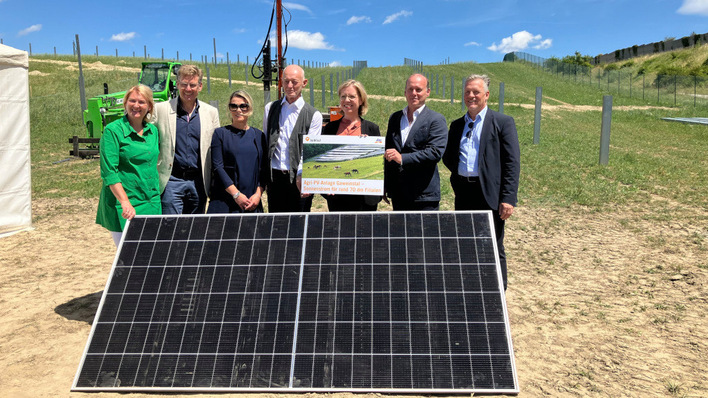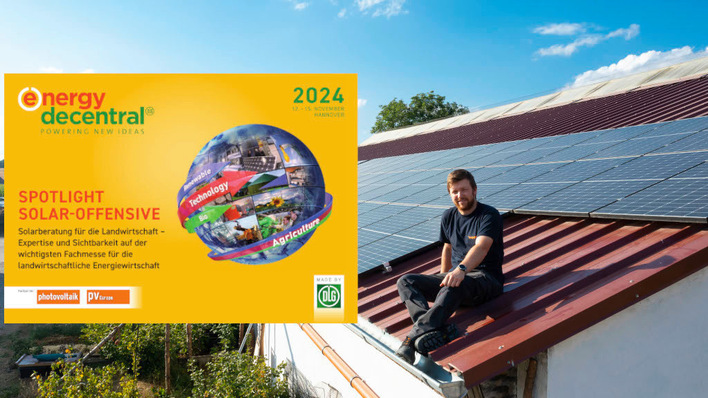Energy Decentral got off to a flying start. Already on the first day of the trade fair for decentralised green energy supply for farms, the crowds at the stands of the photovoltaic exhibitors were great. On the second day of the fair in Hanover, interest remains high. After all, on the one hand, farms are looking for ways to get their rising energy costs under control. Especially in times of rising electricity and gas prices, solar energy is becoming a solution.
Investment opportunities sought
However, many farmers are also looking for investment opportunities and solutions at the fair to make additional use of their own land. At Energy Decentral, they will find plenty of options for investing in solar energy on the one hand and for improving their arable land on the other. They were also able to find out how this works at the trade forum.
Gridparity and Bayewa r.e., for example, presented their approaches to how the dual use of land works. In addition to the solar roofing of berry plantations, which replaces the previous foil roofs, Gridparity, among others, also has a higher-raised variant in its portfolio. This is intended for the construction of solar canopies on pome fruit orchards - especially when the trees in older plantations are very tall.
Systems pay for themselves quickly
Such installations become a second source of income for the farmers. "Because we have payback periods with these photovoltaic plants of less than seven years," explains Erich Merkle, Managing Director of Gridparity. The actual payback period depends, of course, on the yields of the solar system.
See also: EWS Consulting puts three megawatts of agri-PV into operation in Austria
These depend on the one hand on the solar radiation and on the other hand on the occupancy of the solar modules with the solar cells. This is because the modules used are semi-transparent so that the plants also still get light. The higher the transparency, the lower the yields.
Thinking about the water balance
Here, farmers can adjust the light transmittance to the plants grown underneath. In addition, the systems help to make better use of water resources, as rainwater can be diverted via the modules and the mounting system into a storage unit and then be available later for drip irrigation during drier periods.
Solar fences for fields and pastures
In addition, exhibitors such as Next2Sun and Gridparity will be showing solar fences. These vertically elevated systems are equipped with bifacial modules. The height here depends on the animals whose pasture is to be fenced in with the modules.
However, these solutions can also be used for arable land. The technological approach is also suitable for arable land, however, if the individual rows of modules are spaced far enough apart so that they do not shade each other.
Top-class information at the expert forum
On the third day of the fair, there will also be plenty of information at the expert forum. Between 4:30 and 6 p.m., engineer Ansgar Böker will first explain the economic efficiency of solar parks. This will be followed by Peter Schrum, Managing Director of Sunfarming, who will address the dual use of land, including animal welfare.
Please also have a look at our special issue on PV for farmers!
Andreas Pfeifer of Fotovatio Renewable Ventures (FRV) will address the management of storage units. Finally, Frank Hilgenfeld of Elements Green will present the management of agriphotovoltaic systems. You will find the expert forum at Energy Decentral in Hall 25 Stand K15. (su)







